What is the best way to draw a line over a black and white (binary) image in MATLAB, provided the start and end coordinates are known?
Please note, I am not trying to add an annotation line. I would like the line to become part of the image.
What is the best way to draw a line over a black and white (binary) image in MATLAB, provided the start and end coordinates are known?
Please note, I am not trying to add an annotation line. I would like the line to become part of the image.
You may want to look at my answer to an SO question about adding a line to an image matrix. Here's a similar example to the one I have in that answer, which will make a white line running from row and column index (10, 10) to (240, 120):
img = imread('cameraman.tif'); % Load a sample black and white image
x = [10 240]; % x coordinates
y = [10 120]; % y coordinates
nPoints = max(abs(diff(x)), abs(diff(y)))+1; % Number of points in line
rIndex = round(linspace(y(1), y(2), nPoints)); % Row indices
cIndex = round(linspace(x(1), x(2), nPoints)); % Column indices
index = sub2ind(size(img), rIndex, cIndex); % Linear indices
img(index) = 255; % Set the line points to white
imshow(img); % Display the image
And here's the resulting image:
If you are bothered by exceptional cases of other methods here's a bullet-proof method that results in a line:
Inputs (convenient for making function out of this code):
img - matrix that contains image,x1, y1, x2, y2 - coordinates of the end points of the line to be drawn.Code:
% distances according to both axes
xn = abs(x2-x1);
yn = abs(y2-y1);
% interpolate against axis with greater distance between points;
% this guarantees statement in the under the first point!
if (xn > yn)
xc = x1 : sign(x2-x1) : x2;
yc = round( interp1([x1 x2], [y1 y2], xc, 'linear') );
else
yc = y1 : sign(y2-y1) : y2;
xc = round( interp1([y1 y2], [x1 x2], yc, 'linear') );
end
% 2-D indexes of line are saved in (xc, yc), and
% 1-D indexes are calculated here:
ind = sub2ind( size(img), yc, xc );
% draw line on the image (change value of '255' to one that you need)
img(ind) = 255;
Here's the example image with three lines drawn on it:

It actually is just a modification on plesiv's answer. I'm drawing thousands of lines over an image and I need to increase the performance. The most improvement made by omitting interp1 calls and using integer variables made it slightly faster. It performs about 18% faster on my PC comparing to plesiv's code.
function img = drawLine(img, x1, y1, x2, y2)
x1=int16(x1); x2=int16(x2); y1=int16(y1); y2=int16(y2);
% distances according to both axes
xn = double(x2-x1);
yn = double(y2-y1);
% interpolate against axis with greater distance between points;
% this guarantees statement in the under the first point!
if (abs(xn) > abs(yn))
xc = x1 : sign(xn) : x2;
if yn==0
yc = y1+zeros(1, abs(xn)+1, 'int16');
else
yc = int16(double(y1):abs(yn/xn)*sign(yn):double(y2));
end
else
yc = y1 : sign(yn) : y2;
if xn==0
xc = x1+zeros(1, abs(yn)+1, 'int16');
else
xc = int16(double(x1):abs(xn/yn)*sign(xn):double(x2));
end
end
% 2-D indexes of line are saved in (xc, yc), and
% 1-D indexes are calculated here:
ind = sub2ind(size(img), yc, xc);
% draw line on the image (change value of '255' to one that you need)
img(ind) = 255;
end